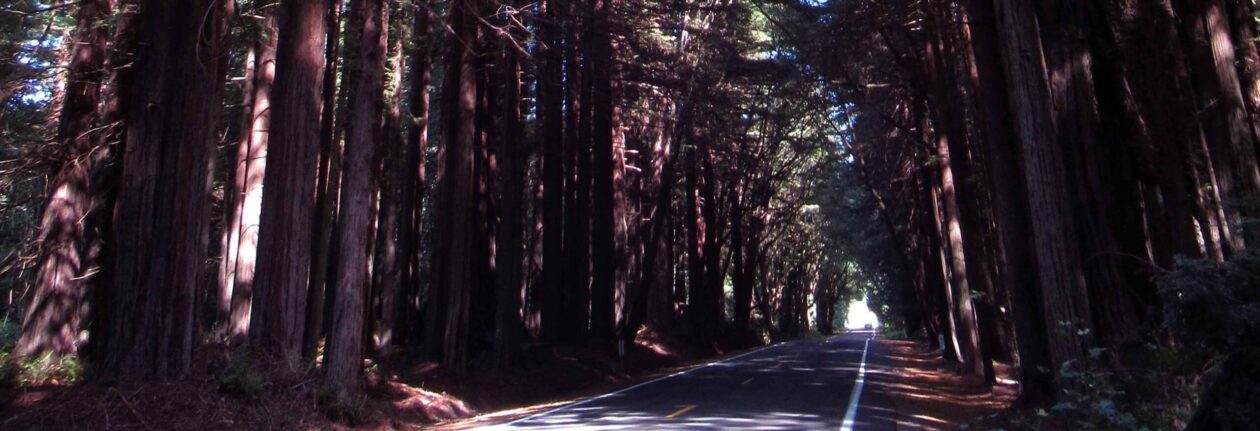Mostar, Bosnia and Herzegovina
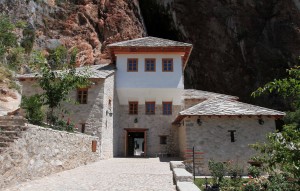
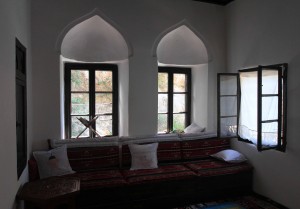
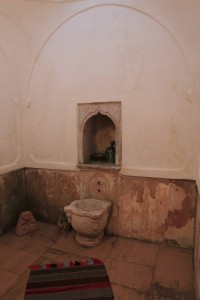

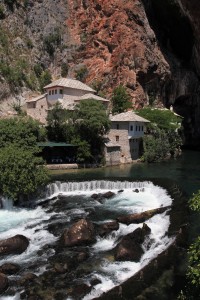
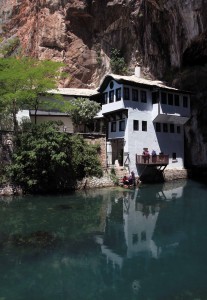
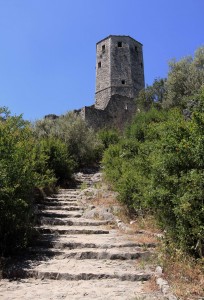
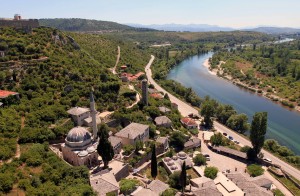
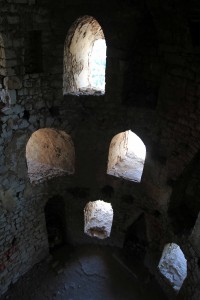
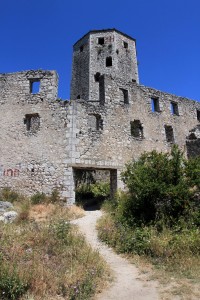
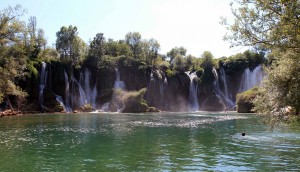
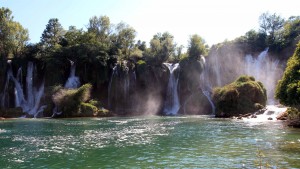
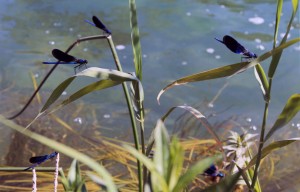
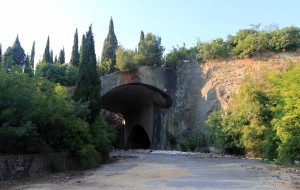
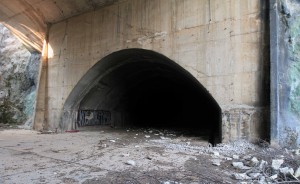
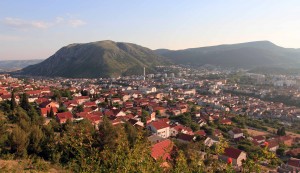
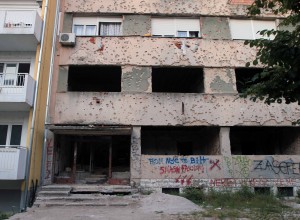
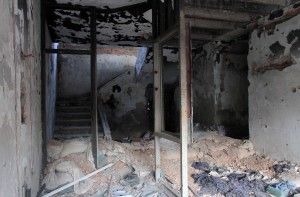
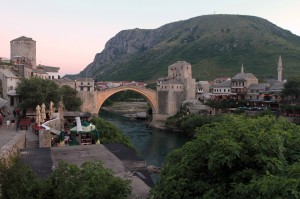
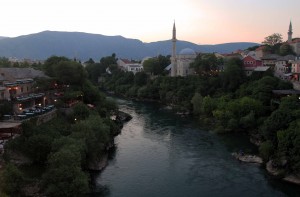
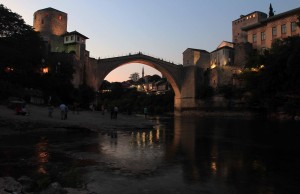
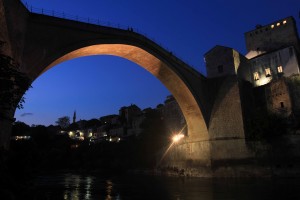
I woke up today at 08:30, showered, dressed, and got ready for the full-day tour I had signed up for last night. Once ready, I had some coffee brewed at the hostel and I waited around for the tour to begin, which was delayed to allow the hostel owner to pick up three more guests and to see if they were interested in joint the tour – they were. Once ready (after 11:00), everyone on the tour (two Malaysian girls, two Australian men, one Brazilian man, one Asian man, and I) loaded up in to the owner’s van and he drove us around Herzegovina, taking us to all the best sites nearby Mostar (whilst playing loud music, driving somewhat crazily, and stopping to talk to cute girls, asking them for directions to the Old Bridge – he was a bit of a character). Our first stop on the tour was a restaurant in Blagaj village, on the edge of the Buna River spring and within walking distance to the Blagaj Tekija (a Dervish monastery that was built around 1520 AD, with elements of Ottoman architecture and Mediterranean style). Once at the destination, we exited the vehicle and were shown to a table next to the river, where we all had orange juice, salad, and burek (stuffed with sausages and cheese). After this late breakfast, we walked to the Blagaj Tekija, paid the entrance fare, and wandered around inside (apart from the modestly dressed Malaysian girls, I was the only other one who didn’t have to cover up my legs or shoulders – I was wearing jeans and a button-up shirt on this very hot day); after the hostel owner/tour guide gave a brief explanation of Islam and the Sufi religion, and after exploring each room and the small hamam, I exited the building with the others in our group. We then walked to the other side of the Buna River and took many photos of the Blagaj Tekija from a very scenic spot. Once done, we made our way back to the van and were driven to our next stop: the village of Počitelj (a village I passed on the bus from Split to Mostar). Once we made it to the village, the hostel owner told us briefly about the village (situated on an important trade route) and how many residents were massacred during the recent war; he then left us to wander around for forty minutes while he went to the mosque to pray. Once released, we all made our way up to the fortress on top of the hill overlooking the village and explored the ruins and climbed to the top of the tower there. As our time to the village came to an end, we made our way down to a café by the road and waited until everyone was ready to leave; while at the café, I drank some juice and tea to try to rehydrate since the heat was taking quite a toll on my body). We then left the village behind in our tour van and drove to Kravice Falls (a beautiful, wide waterfall on the Trebižat River). When we reached the falls, I changed in to my swim wear and walked in to the cool water. I then swam to the opposite bank and stood in the sun while talking with the Brazilian man on our tour; eventually we swam back to the other side, hung around in the sun some more with the two Aussies (the Malaysians and the Asian man did not partake in the waters or sun), before dressing and leaving the site. We then drove back to Mostar, stopped for a brief lunch (I had snacked on a bag of almonds in the van and was not hungry, so I just drank some much needed water), and then drove to an abandoned aircraft bunker built inside the foot of the mountains near the air field. Once parked outside of the bunker, we sat on the pavement and the hostel owner told us his view on the Bosnian War (sadly, he was one of those guys who yearns for the days of Tito (though he was too young to remember any of it) and having everything given to him; also, he was a staunch anti-capitalist even though he was now living well thanks to capitalism). Anyway, after about a half hour of preaching mostly nonsense to us, we walked in to the bunker. This bunker was very large, very dark inside, and covered with goat shit at both entrances (I guess the herds like to hang out near the cool air emanating from the bunker). We entered in one end, turned on what flashlights we had (I had my iPhone flashlight), and walked through the bunker; the hostel owner pointed out where planes were parked at one time and where the classroom was (he had served briefly in this bunker); we made our way through the pitch black to the other end where we exited; we then followed a trench alongside the road back to where the van was parked and entered back in to the vehicle. Next, we drove to a lookout point where we had a nice view of Mostar and the surrounding mountains. After that stop, we drove in to Mostar and to a building still showing scars from the war twenty years ago; this building was on a street that at one time was the dividing line between the Croatian and Bosnian armies and it had been witness to a lot of destruction and death. We entered inside the building (that actually had people living on the top floors despite everything else still being in ruins from the war), walked over a pile of sandbags, and upstairs to survey the damage (as well as many droppings of human excrement – yep, it was being used as an open toilet). After looking at this building, we walked to another building nearby that was still destroyed, bearing many bullet pop-marks. This somber site was the end of our tour and we were then driven back to the hostel. Once back at the hostel, I had planned to get some work done, but the others planned to see the Old Bridge (known as “Stari Most”) in the twilight and I decided I should join them; so, I joined the two Aussies and the Brazilian and we walked to the old town of Mostar, to the Old Bridge. We walked across the bridge, over the Neretva River, to the other side and got some decent photographs of it; the young Aussie man had wanted to jump off the bridge and was sure he could do it, but sadly could not since it costs money and time to train and the authorities would’ve arrested him if they caught him jumping off on his own. After seeing the bridge and once the sun had set, we walked back to the hostel. The Aussies and the Brazilian then showered and got ready to see the nightlife, having earlier been enamored with many young beauties we saw walking around the city; I decided to stay behind and go through my photos and try to get some work done. Although, before beginning to work, I walked to a nearby market and bought a one-liter bottle of Herzegovina white wine. Back at the hostel, I worked on my laptop, drank the wine (it was made from Žilavka grapes and tasted of lemons and other citrus fruits; it was overall smooth and not bad considering how cheap it was), talked with a New Yorker man who had arrived earlier in the day, and got precious little work done. After drinking some beer at the hostel, the Aussies and Brazilian went out to try their game, but after less than an hour, they were back; apparently every pub was dead (save for one old man) on a street we had walked a couple of hours ago; when we had walked it coming back from the Old Bridge, it was teeming with activity and many slender, young women; of course, this was Wednesday night and Mostar is not exactly a party town. Oh well. We all hung out with the hostel owner until after midnight before going to sleep.
